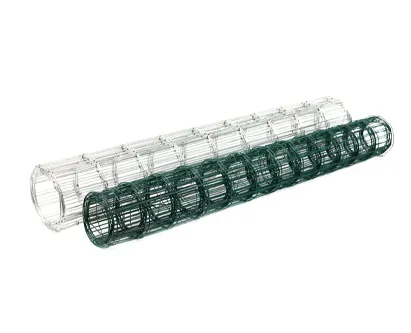39 inch field fence
Understanding 39-inch Field Fencing A Practical Guide
When it comes to agricultural and residential fencing, the choice of materials and design can make a significant impact on functionality, safety, and aesthetics. One popular option is the 39-inch field fence, which has gained traction among farmers, ranchers, and homeowners for various reasons. This article delves into the features and benefits of 39-inch field fencing, its applications, installation tips, and maintenance practices.
What is 39-inch Field Fencing?
39-inch field fencing typically refers to a type of woven wire fencing that stands 39 inches tall, making it suitable for a range of applications. It is designed to contain livestock, protect crops, and enhance property boundaries. The fence is usually made from galvanized steel wire, which provides strength and durability while resisting rust and corrosion.
The construction of a 39-inch field fence generally includes vertical wires (stay wires) spaced evenly apart, with horizontal wires twisted around them. This design not only gives the fence its strength but also ensures it can withstand the pressure exerted by animals or environmental factors.
Applications of 39-inch Field Fencing
1. Livestock Containment One of the primary uses of 39-inch field fencing is to contain livestock such as sheep, goats, and poultry. The height is adequate to prevent smaller animals from escaping while also deterring some larger animals from entering the area.
2. Crop Protection Farmers often use this type of fencing to protect crops from wildlife. By creating a barrier around fields, farmers can reduce the damage caused by deer, rabbits, and other animals that might nibble on young plants.
3. Garden Borders Homeowners frequently install 39-inch field fencing around gardens to keep pets and wildlife out. The fence can blend well with natural landscapes while providing a functional boundary.
4. Property Line Marking This fence can serve as an effective property line marker, helping to define boundaries without creating a stark visual barrier like solid walls or tall fences would.
Benefits of 39-inch Field Fencing
- Cost-Effective Compared to other fencing options, 39-inch field fencing is often more affordable, making it an attractive choice for budget-conscious farmers and homeowners.
39 inch field fence

- Versatility This type of fencing can be used in various settings, from rural farms to residential backyards, allowing for wide-ranging applications.
- Visibility The open weave of the fencing allows for visibility, which can enhance aesthetics and ensure that open spaces feel less confining.
- Ease of Installation Many 39-inch field fence products are designed for quick and easy installation. This means that homeowners and farmers can often set up fencing without needing professional assistance.
Installation Tips
For those considering installing 39-inch field fencing, here are some helpful tips
1. Plan Your Layout Before purchasing materials, plan the layout of your fence. Measure the area accurately to determine how much fencing you will need.
2. Choose Quality Materials Opt for high-quality galvanized wire that can withstand harsh weather conditions. Cheaper alternatives may save money upfront but could lead to increased costs in replacements over time.
3. Secure Post Installation Install sturdy fence posts every 8 to 12 feet to provide adequate support to the fence. Ensure that the posts are firmly anchored in the ground to prevent leaning or collapses.
4. Tensioning the Wire Proper tensioning of the wire is crucial for the longevity and functionality of the fence. Make sure to pull the wire tight during installation to minimize sagging.
Maintenance Practices
To ensure that your 39-inch field fence remains in good condition, regular maintenance is essential. This may include inspecting for rust or damage, tightening loose wires, and ensuring that animals are not using the fence as a scratching post, which can weaken its structure.
In conclusion, a 39-inch field fence is a versatile, cost-effective, and practical solution for a variety of fencing needs. Its durability makes it suitable for continuous use, while its aesthetic appeal ensures that it fits well in both agricultural and residential settings. Whether you are looking to contain livestock, protect gardens, or mark property lines, this type of fencing is an excellent choice that can serve you well for many years.
-
The Durability and Versatility of Steel Wire
NewsJun.26,2025
-
The Best Iron Nails for Your Construction Projects
NewsJun.26,2025
-
Strengthen Your Projects with Durable Metal Stakes
NewsJun.26,2025
-
Get the Job Done Right with Duplex Nails
NewsJun.26,2025
-
Explore the Versatility and Strength of Metal Mesh
NewsJun.26,2025
-
Enhance Your Security with Razor Wire
NewsJun.26,2025














